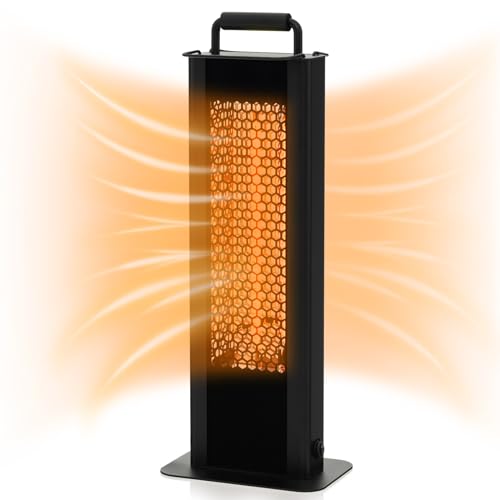How to Choose a Patio Heat Lamp Electric
When you want to heat your patio, you have several options. Electric heaters are more convenient than propane models, which require fuel refills. They can be heated in a matter of minutes by pressing a button or flipping a switch.

These units also don't emit gasses that could cause health risks. Some units have adjustable heat settings to accommodate different distances.
Heater Type
You can enjoy your outdoor living space all through the evening and all through the year with the right patio heater. Patio heaters come in many varieties that include freestanding propane or natural gas models as well as ceiling or wall-mounted electric radiant heaters. Your choice will depend on the dimensions of the space, power sources available and personal preference.
The majority of patio heaters are powered by electricity or liquid or natural gas and produce heat through convection and radiant heating. The output of patio heaters is measured in watts which can be converted into British thermal units (BTUs) to give a comparative. Some models can be adjusted in temperature settings that give you more flexibility.
A patio heat lamp incorporates an electric burner on a pole with a perforated metal screen that is reflective of the flames and radiates the heat downwards to warm people, furniture and other objects. Some outdoor heat lamps have a reflective reflector on top of the burner that can be silvered in order to limit the amount of heat is lost upwards.
The most well-known kind of patio heater is a gas patio heater is usually found in outdoor seating areas at bars and restaurants since they generate a lot of heat quickly and distribute equally across all directions -- great for warming tables. These patio heaters can be portable and run from a propane tank or plumbed into your natural gas line with the latter providing more convenience and lower upfront installation costs but they require ongoing expenses for fuel.
Gas patio heaters are becoming more popular as more houses have natural gas lines. They're simple to install, but require a dedicated and functioning gas line in order to perform in a safe manner. Natural gas heaters that are portable are available with extension hoses to help overcome this limitation, but they could be a trip hazard and may pose an additional fire risk when not in use.
Safety
Electric patio heaters can be used safely in enclosed areas, since they allow heat to radiate upwards and not outward. However, are electric patio heaters any good 're not designed to be used on an open roof. The heater must be installed at minimum 18" from adjacent walls or 6" from the ceiling to prevent fire hazards.
The propane and gas patio heaters are typically safe to be installed in enclosed areas with the proper cover specifically designed for use in open air. These types of covers are typically made from fire-retardant canvas and have an open roof that can be closed. These kinds of patio heaters are prone to security concerns due to the flames and fumes they generate. They should be kept away from any objects that could ignite like chairs and curtains.
When installing an electric patio heat lamp or any other type of patio heater, be sure to follow the manufacturer's directions and safety precautions carefully. Be sure to choose a system with UL and CSA certifications, and read the owner's guide thoroughly. Be extra cautious with pets and children and make sure the heater isn't within their reach when it's running. Some patio heaters that stand on their own, such as EUROM's, include a tipping safety feature that shuts the device off if it falls.
If your patio heater runs on natural gas lines, it's important to check the condition of the line periodically and to be tested for leaks by a qualified professional. If the line needs to be replaced, be certain to get an authorized plumber. A professional will be able to determine if the line needs to be routed through an underground pipe or not. A professional can make sure the heater for your patio is connected into an outlet that's GFCI (ground fault circuit interrupter) certified to guard against electrical fires and shocks.
Installation
The height at which a patio heater is placed affects the amount of heat it will radiate into the area. The heater should be placed away from any surfaces such as plastic and wood that could deform. Depending on the model of the heater you may choose to mount it on a wall or a structure using conventional mounting brackets. Some models have soft start, which lowers the current peak to protect your circuits.
